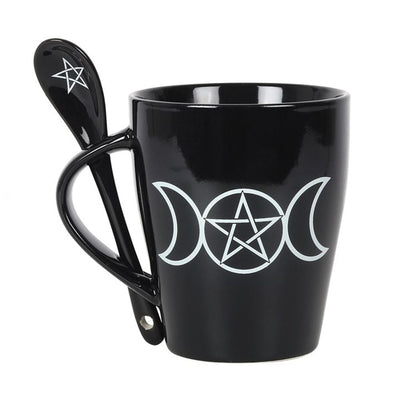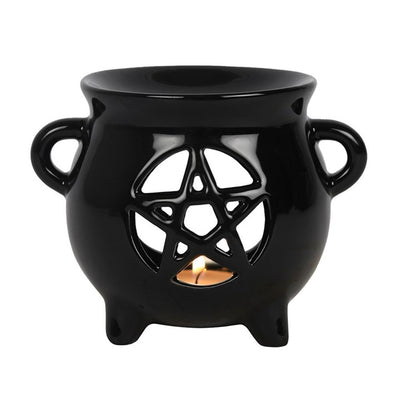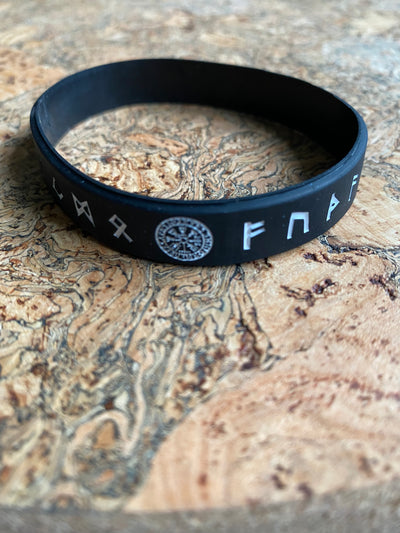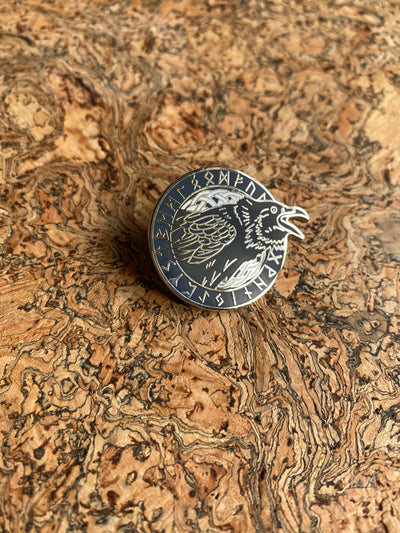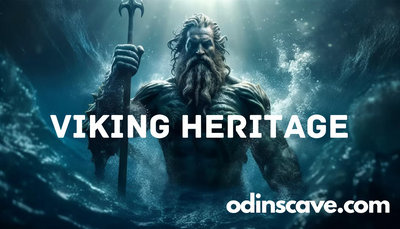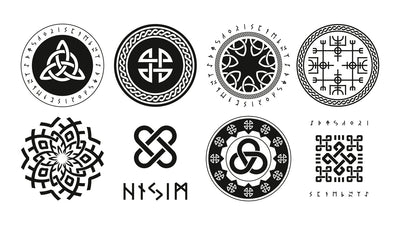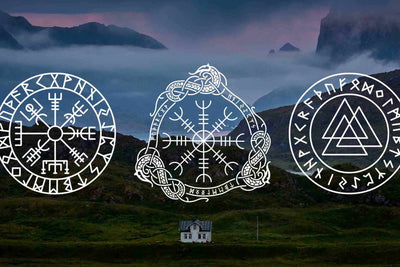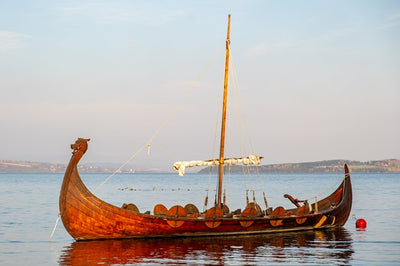Viking History result vikin
Viking symbols and their meaning
Viking culture is well-known for its use of symbols, which hold deep significance in their beliefs, traditions, and way of life. These ancient Norse symbols, often depicted in their art, jewellery, and even on runestones, provide valuable insights into the values and beliefs of the Viking people. We briefly explore some of the most prominent Viking symbols and their meanings, looking at the cultural and spiritual significance they held for the Norse people.
The Hammer of Thor (Mjölnir)

Perhaps one of the most recognisable Viking symbols, the Hammer of Thor, or Mjölnir, is the weapon of Thor, the god of thunder. This symbol is often worn as a protective amulet and is believed to invoke the power and protection of Thor against enemies and evil forces. It also symbolises strength, courage, and protection.
Huginn and Muninn: The Ravens of Norse Mythology
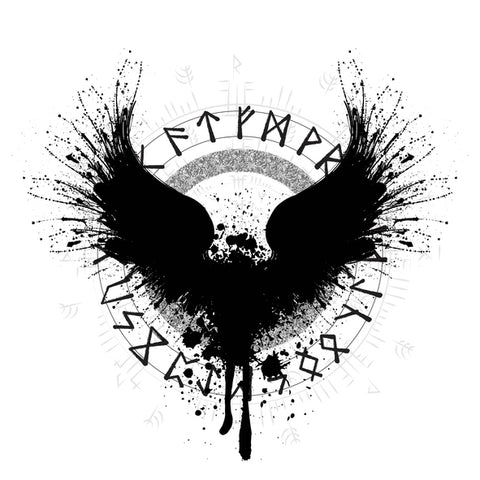
In Norse mythology, Huginn and Muninn are two iconic symbols that hold great significance in the lore of the Vikings. These revered creatures, often depicted as ravens, are closely associated with Odin. Huginn and Muninn are not merely symbolic representations but are also considered companions and messengers of Odin. According to Norse mythology, these ravens fly across the world each day, gathering information and bringing messages to Odin in his hall of Valhalla. While Huginn represents "thought," Munin symbolizes "memory."
The Valknut
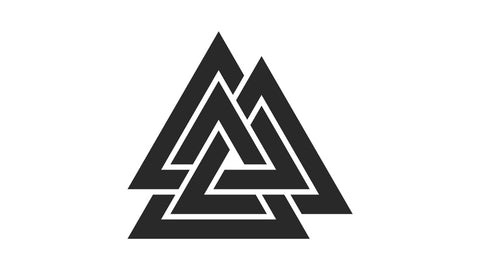
The Valknut, also known as Odin's Knot, is a symbol consisting of three interlocking triangles. It is closely associated with Odin, the Norse God, and is often interpreted as a symbol of Odin's power to bind and unbind the fates of men. It is also thought to represent the interconnectedness of life, death, and destiny in Norse mythology.
Fenrir
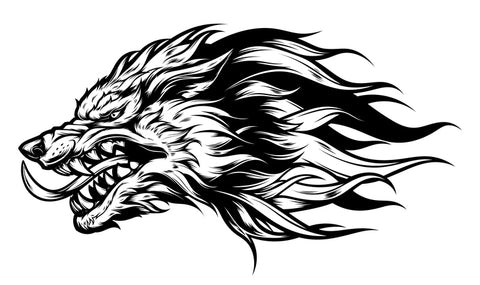
Fenrir, also spelt Fenrisúlfr, is a monstrous wolf in Norse mythology. He is the son of the god Loki and the giantess Angrboða, making him the sibling of the serpent Jörmungandr and the goddess Hel. Fenrir is depicted as a fearsome and powerful creature, destined to bring about chaos and destruction during Ragnarök, the Norse apocalypse. He is often seen as a symbol of chaos and the uncontrollable aspects of the universe in Norse mythology.
Helm of Awe (Ægishjálmr)
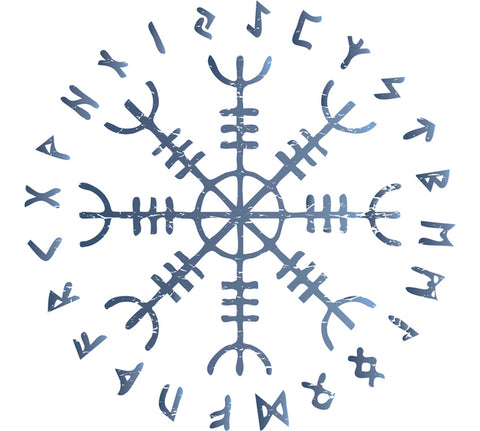
The Helm of Awe is a symbol of protection and strength. It is believed to scare away your enemies and offer protection to the wearer. The symbol is often depicted as a circular array of interlocking arms or spikes.
Vegvisir (Viking Compass)
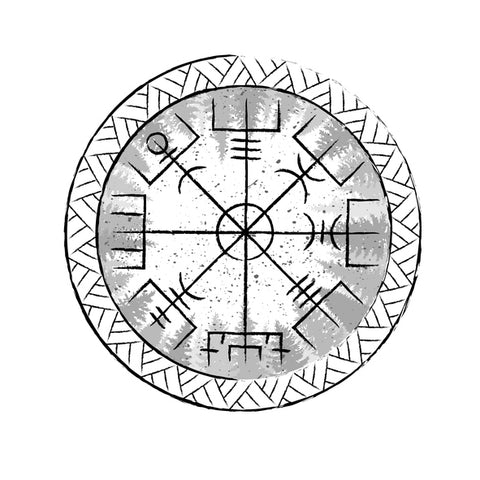
The Vegvisir is a symbol of navigation and guidance. It is thought to help the bearer find their way through stormy weather or difficult conditions, both literally and metaphorically. It is often depicted as a stylised compass with runic symbols surrounding it.
Yggdrasil (The Tree of Life)
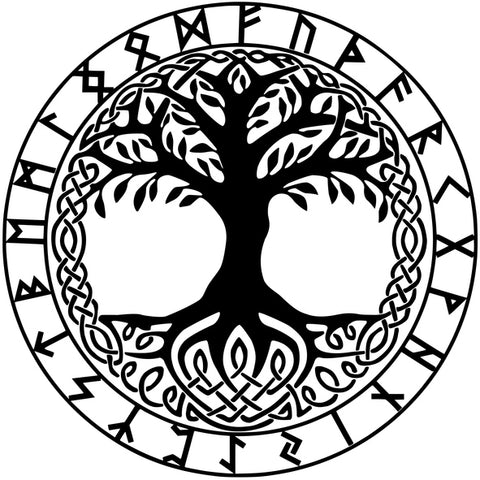
Yggdrasil is the tree that connects the nine worlds of Norse mythology. It symbolises the interconnectedness of all things in the universe and represents the cycle of life, death, and rebirth. Yggdrasil is often represented as a massive ash tree with its roots extending into the underworld and its branches reaching up to the heavens.
Viking Rings: Ancient Symbols of Power and Faith
Among the diverse array of Viking jewellery, rings stand out as enduring symbols of status, identity, and allegiance. Viking rings were not merely ornamental but held profound cultural and social significance within Norse society. Crafted primarily from silver, gold, and bronze, Viking rings exhibited exquisite craftsmanship, featuring intricate designs and symbolic motifs.
Viking rings served various purposes, ranging from decorative adornments to practical accessories. Signet rings, for example, bore intricate engravings or raised symbols, functioning as personal seals for authentication and identification. These Vikings rings often depicted animals, mythological figures, or runes, embodying the Norse pantheon and ancestral heritage.
Viking rings were also exchanged as tokens of friendship, alliance, or betrothal, symbolising bonds of loyalty and trust. In Norse culture, the act of giving and receiving rings held deep significance, representing oaths of fealty or agreements sealed in honour. Wedding rings, in particular, were bestowed as symbols of enduring love and commitment, marking the union of two souls in matrimony.
Archaeological excavations have unearthed a wealth of Viking rings, providing invaluable insights into their artisanship and symbolism. Discoveries ranging from simple bands to elaborately decorated rings showcase the diversity and artistry of Viking jewellery. Below we'll share some motifs commonly used in ancient Vikings rings and jewellery.
Animal Figures
Animals held significant symbolism in Norse mythology and were commonly depicted in Viking jewellery. Examples include wolves, bears, ravens, eagles, and serpents. These animals often represented strength, courage, protection, or connection to the natural world.
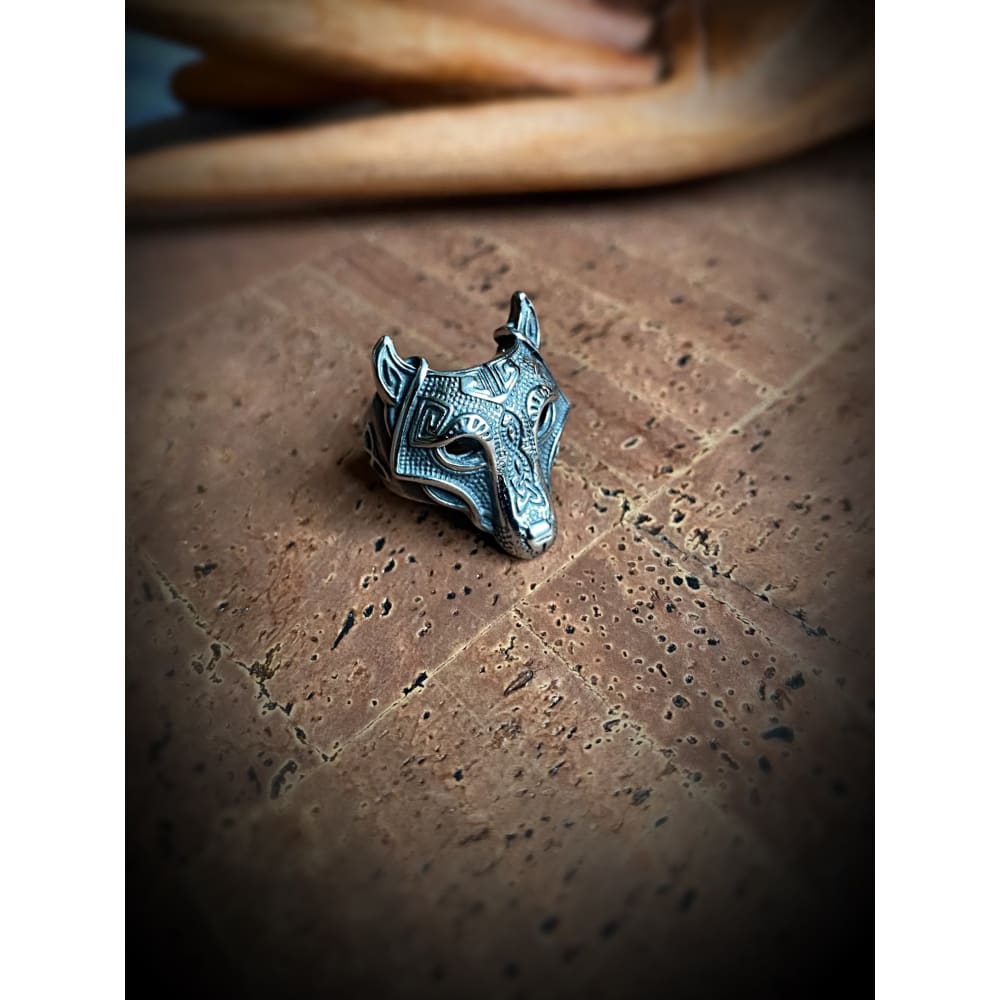
Mythological Figures
Norse mythology was rich with gods, goddesses, and mythical creatures, many of which were depicted in Viking jewellery. Popular figures included Thor with his hammer Mjolnir, Odin with his ravens and wolves, Freyja with her cats, and Loki the trickster.
Rune
The runic alphabet was used by the Vikings for writing, magic, and divination. Runic inscriptions were common on Viking artefacts, including jewellery. Each rune had its own symbolic meaning, and they were often used to convey messages or invoke protective powers.
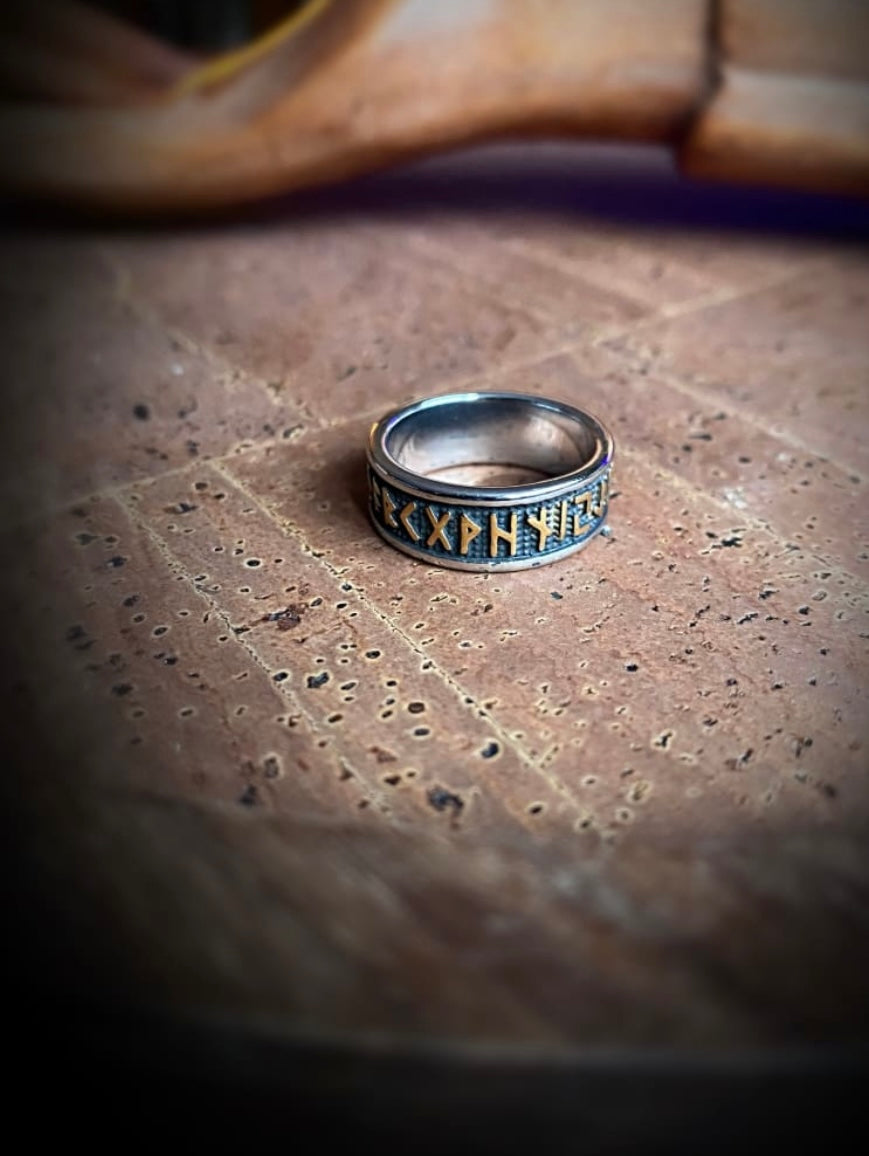
Geometric Patterns
Viking jewellery often featured intricate geometric patterns, such as interlacing knots, spirals, and braids. These patterns symbolised interconnectedness, continuity, and the cyclical nature of life.
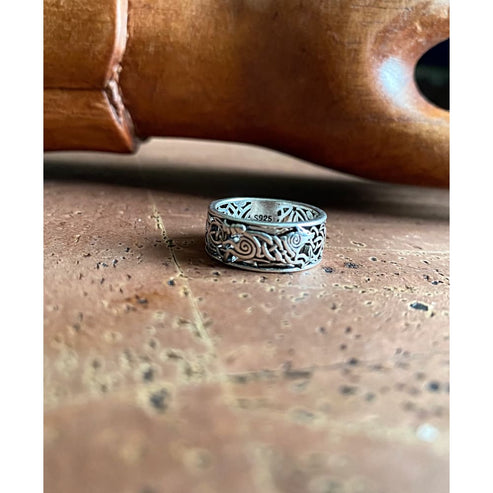
The Tree of Life
The Viking Tree of Life, known as Yggdrasil in Norse mythology, holds significant importance as a cosmic symbol representing the interconnectedness of all things in the universe. Yggdrasil is often depicted as an immense ash tree that links the nine worlds of Norse cosmology. Yggdrasil serves as a cosmic axis, connecting the different realms of existence in Norse cosmology. Its roots extend into three separate realms: one in Asgard (the realm of the gods), one in Jotunheim (the realm of the giants), and one in Niflheim (the realm of ice and mist). Its branches stretch over the entire cosmos, reaching into the heavens.
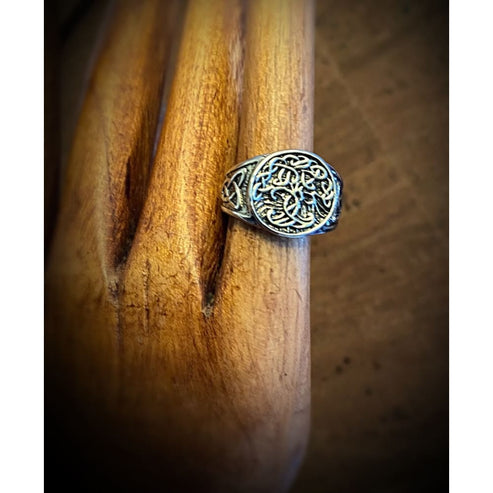
Yggdrasil is intertwined with various myths and legends in Norse mythology. For example, Odin, the chief god, hung himself from one of the branches of Yggdrasil for nine days and nights to gain wisdom and knowledge of the runes. Additionally, the dragon Nidhogg gnaws at the roots of Yggdrasil, symbolizing chaos and destruction.
Viking Heritage - The Norseman Legacy
The Legacy of the Norsemen: Delving into Viking Heritage
The Viking Age, spanning from the late 8th to early 11th century, is a fascinating period in human history marked by exploration, conquest, and cultural exchange. The Vikings, originating from the Scandinavian regions of Norway, Denmark, and Sweden, were much more than the ruthless warriors they're often portrayed as. They were seafarers, traders, and pioneers, whose influence still resonates in today's modern world. Let's embark on a journey to explore the rich Viking heritage. Explore Viking Rings for sale
Vikings, the name which roughly translates to 'pirate' in Old Norse, began their saga as explorers and settlers. They sailed the icy seas to distant lands, from the shores of North America to the gates of Eastern Europe, in their iconic longships. Their voyages were not merely for conquest but were driven by a desire for trade and exploration. They established settlements and trading posts, influencing local cultures and economies along their routes.
One of the most significant aspects of Viking heritage is their intricate art and craftsmanship. From their beautifully carved longships to their ornate jewelry, the Vikings were skilled artisans. Their art, often characterized by intricate knotwork and animal motifs, is reflective of their deep connection with nature and mythology. This art continues to inspire modern design, particularly in Nordic countries.
See our range of premium Viking bracelets and arm rings, perfect to show off your inner warrior.
In terms of societal structure, Vikings lived in a highly organized society. They had a well-defined law system and assembly, called 'Thing', where free men could voice their opinions and settle disputes. This idea of a communal assembly is considered a precursor to modern democratic institutions.
The Vikings were also known for their complex religious beliefs. They worshipped a pantheon of gods, each representing different aspects of life. The Viking mythology, full of tales about gods like Odin, Thor, and Freya, continues to captivate and inspire literature and media today, from novels to blockbuster movies.
Their language, Old Norse, gave birth to several modern languages, including Icelandic, Norwegian, Danish, and Swedish. Many English words, such as 'knife', 'husband', and 'egg', have Old Norse roots, demonstrating the linguistic impact of the Vikings.
Perhaps one of the most enduring aspects of Viking heritage is the concept of 'Viking Spirit.' This spirit was characterized by courage, resilience, and a thirst for exploration. This ethos is reflected today in the adventurous and pioneering spirit of the Nordic people.
Viking heritage is not confined to history books or museums; it is interwoven into the fabric of modern society, influencing our art, literature, language, and societal structures. The Vikings may have ceased to exist as a distinct group over a thousand years ago, but their legacy sails on, standing as a testament to their indomitable spirit and cultural richness.
So, the next time you see a Viking helmet or hear a tale about Thor and Loki, remember that these symbols and stories are echoes of a vibrant and rich heritage. They remind us of a fearless, explorative, and creative people who left an indelible mark on human history. The Vikings may have faded into the mists of time, but their heritage continues to inspire and influence us today.
Viking Longships, Legendary World of Viking Longships
Viking ships have become an iconic symbol of the Viking Age, and with good reason. Although, you may know them as Long Ships Viking ships were incredibly advanced for their time, allowing Viking warriors to travel across Europe and even as far as North America. These ships were built with unique design features that allowed them to traverse oceans and rivers with ease.
The design of Viking ships was based on the longships of the Norse people. These ships were typically long and narrow with symmetrical ends. They had shallow drafts, which allowed them to navigate shallow waters, and could be rowed or sailed. They were also designed to be light and fast, allowing them to outrace enemy ships and make quick escapes.
Premium Buildable Viking Long Ship Model. Build a replica of the Viking Longship with this detailed, buildable model set. With 456 pieces including premium building blocks, you can recreate the legendary ships used by the Norsemen. This set is perfect for creative play or decoration.
The construction of Viking ships was also quite advanced. The ships were made of overlapping planks of wood, held together with iron nails. This technique was known as “clinker-built” and gave the ships added strength and durability. The planks were also curved inwards at the bow and stern, making the ships more aerodynamic and allowing them to cut through the waves with ease.
Viking ships were also equipped with a variety of features that made them formidable vessels. The ships had a single mast, which could be used for both sailing and rowing. They also had a raised platform at the stern, called a “steerboard”, which was used for steering the ship. Finally, the ships were equipped with a variety of weapons, such as bows and arrows, spears, and even catapults.
Viking ships were truly remarkable ships, and they allowed the Vikings to explore and conquer vast areas of Europe, as well as travel to North America. Although they were eventually replaced by more advanced ships, Viking ships remain a symbol of the Viking Age and a testament to the ingenuity and skill of the Norse people.
At odinscave.com we have a great range of Viking jewellery and gifts, including some epic editions that feature the long ship.
